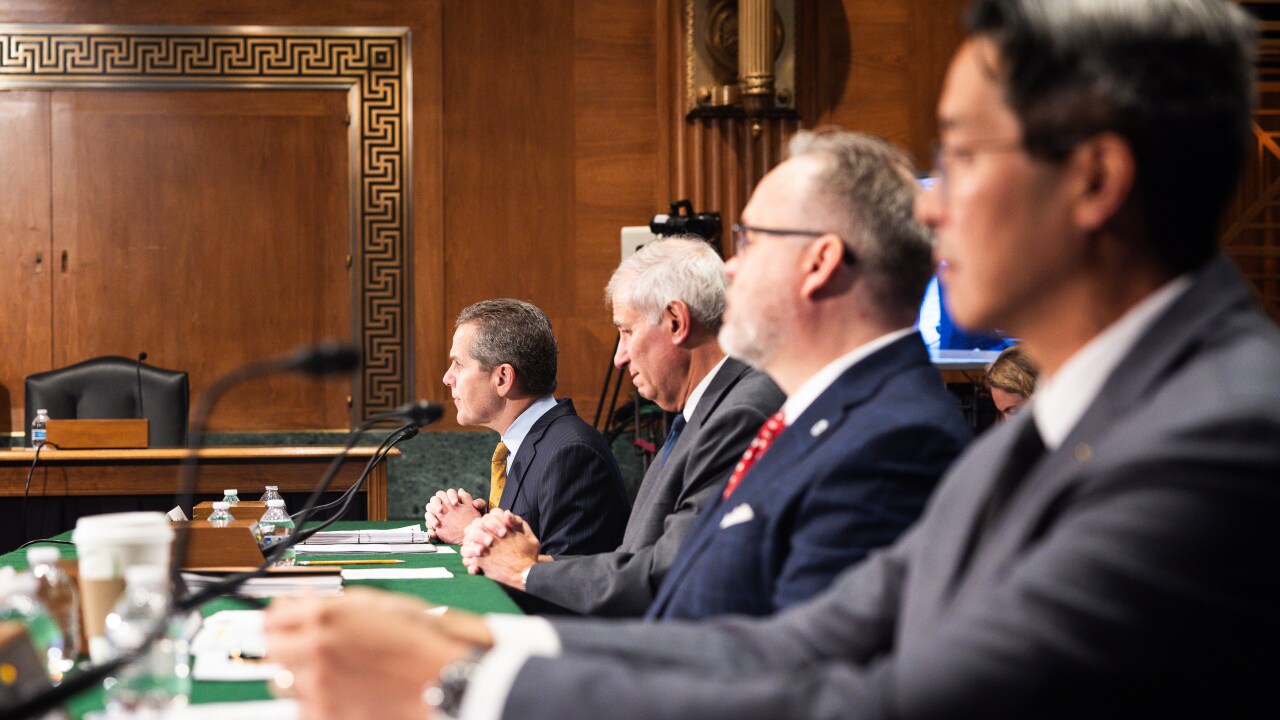
In the wake of
The
While modernization and technology have had an undeniably positive impact, challenges remain that must be addressed by clear guidance from legislatures, thoughtful regulation and — most importantly — clear industry standards. At the top of that list is the need for innovators to commit to meeting the regulatory requirements of advanced financial systems and to work with legislators to modernize laws.
U.S. Representative Andy Barr, current chairman of the Financial Institutions and Monetary Policy subcommittee, recently held a
A lack of transparency is not only a risk to consumers, but a risk to the future of fintech. The
The bottom line is that consumers need to know who handles what — what fees are involved, interest rates, who holds their data and who is responsible for decision-making at each stage of the process.
Banks now have until Oct. 30 to weigh in on potential risks of third-party fintech partnerships for banking products and services.
In online lending, transparency is not only a legal requirement — it is crucial to building trust with customers, regulators and partners. Lenders must follow the Truth In Lending Act, or TILA, which requires lenders to present loan APRs upfront and clearly disclose required fees like late fees, origination fees and late payment penalties. Regulators provide sample forms for disclosure of loan terms to comply with TILA for consumer loans as well as other required information like notices of adverse action or changes in a credit card's interest rate. These are requirements for lenders, whether they are bank or nonbank entities, and the lender has a responsibility to ensure that its service providers comply with the lender's responsibilities under law.
However, recent Supreme Court rulings, like
Regulation is still an important part of the solution to ensure the safety and soundness of the financial system; however, it should be applied in a targeted way to weed out bad actors and ensure customers don't fall victim to rogue actors. Several critical federal and state rules have been tied up in court with legal challenges including rules on consumer lending, small-business lending data collection and bank preemption rights. It is important for fintech businesses to collectively establish common standards that can be used to provide guidance and clear examples to alleviate the legal gridlock.
As fintechs continue to disrupt the archaic systems and processes within traditional financial institutions, they must recognize that compliance with existing law — rooted in transparency — is the best defense against overregulation that stifles innovation and weakens the quality of financial products for millions of underserved Americans.
Acknowledging the need for good regulations based on market data and current practices is necessary for fintechs to lead in developing and delivering trustworthy financial services and products. Fintechs must provide industry standards and collaborate with legislatures in modernizing laws to continue America's leadership in financial services.






